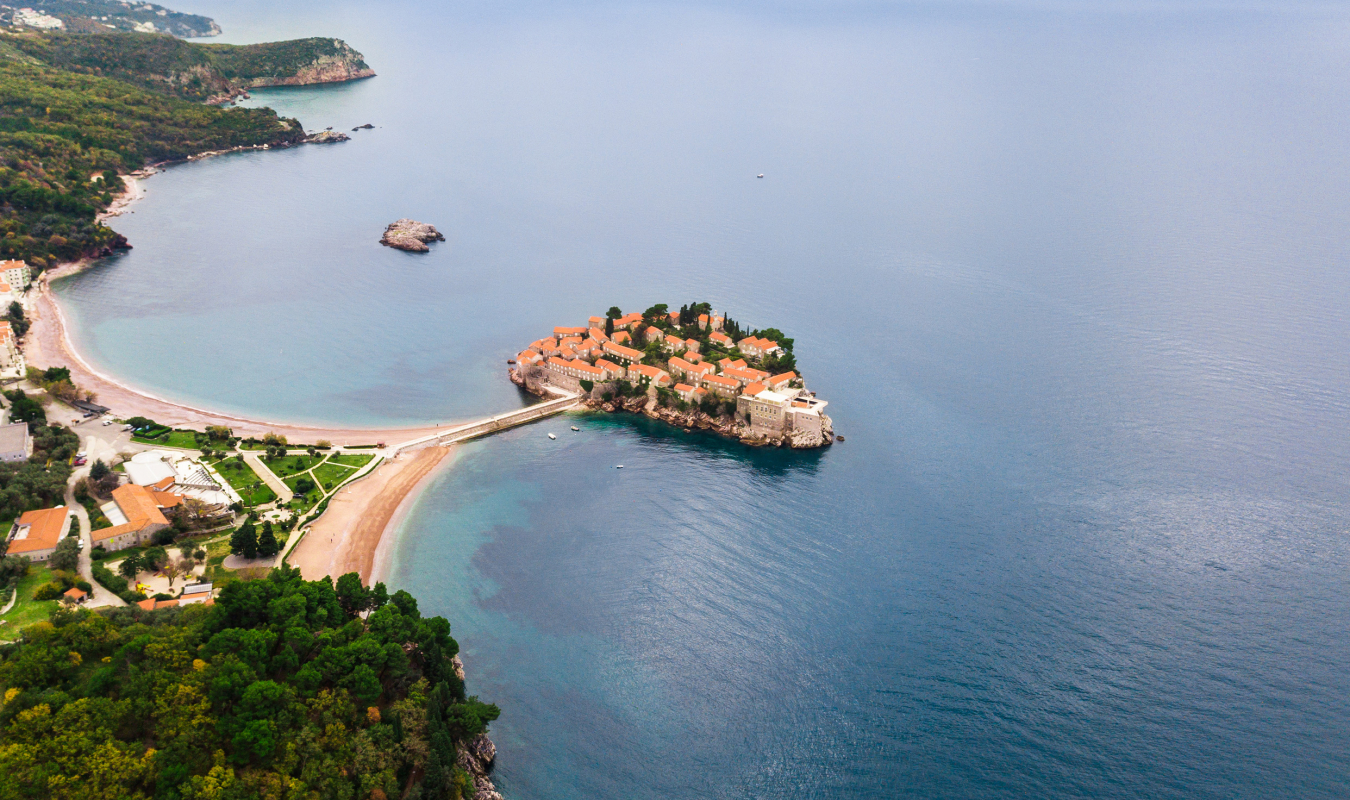Sveti Stefan is a small suburban heritage on an island along the coast. The island was built at the end of the 15th century. According to the legend, it was built by the locals Paštrovići with the treasure conquered after the victory over the Turkish galleys near the beach Jaz. There are four churches on the island, two of which are dedicated to St. Alexander Nevsky. In 1955 the city was transformed into a unique city hotel. The hotel was reconstructed today and is leased by the famous company Aman Resorts. Since its founding, the city hotel Sveti Stefan has been a vacation spot for the most famous people in the world of show business, so we can say that the city hotel Sveti Stefan is a pioneer of Montenegrin elite tourism. The island is connected with a simple raffle to St. Stephen's Beach on the left and right side of the island. Sveti Stefan beach is half sandy and half pebble, and is authentic for its red pebbles. In the vicinity of the island there is a walkway and Miločerski park, you will reach the well-known beaches such as Kraljeva and Kraljičina beach. If you happen to be on Sveti Stefan, do not miss the small town of Pržno, which stretches from Cape Miločer to Cape Kamenovo. Kamenovo beach is only 260 meters long and is considered an elite summer resort. Location Sveti Stefan is 10 kilometers from Budva. You will arrive by car in about 15 minutes by car. The Adriatic Highway stretches along the entire coast of the Budva Riviera. By driving to Sveti Stefan you will have beautiful landscapes passing the most beautiful beaches and places of Budva. After leaving Budva, on the cape of the bay on the right side, you will have a panoramic view of the city of Budva and the island of Sveti Nikola, until you enter Bečići. Through Bečići you will have a section of about 4 kilometers drive, to above the fishing village Rafailovići, which offers a beautiful view of Bečići beach. An adventure through the landscapes of Sveti Stefan will take you all day, which we are sure will be full of impressions. Sveti Stefan is a combination of architecture and nature. A combination of culture and history, which made it authentic.

 Go back to blog
Go back to blog
